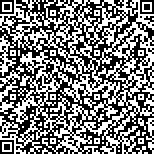王璐,钟明华,高呈飞,等.基于双峰平衡恢复模型探究重复经颅磁刺激治疗脑卒中患者上肢运动功能障碍[J].中华物理医学与康复杂志,2022,44(6):503-508
扫码阅读全文

|
| 基于双峰平衡恢复模型探究重复经颅磁刺激治疗脑卒中患者上肢运动功能障碍 |
|
| |
| DOI:10.3760/cma.j.issn.0254-1424.2022.06.005 |
| 中文关键词: 脑卒中 皮质脊髓束 弥散张量成像 重复经颅磁刺激 |
| 英文关键词: Stroke Corticospinal tract Diffusion tensor imaging Transcranial magnetic stimulation |
| 基金项目: |
|
| 摘要点击次数: 4844 |
| 全文下载次数: 5929 |
| 中文摘要: |
| 目的 观察皮质脊髓束完整性对重复经颅磁刺激(rTMS)治疗脑卒中患者上肢运动障碍的影响。 方法 选取在我院治疗的脑卒中恢复期伴偏侧上肢运动功能障碍患者作为研究对象,首先通过弥散张量成像技术(DTI)重建患者双侧皮质脊髓束(CST),分别选取CST完整性高(rFA>0.5)及CST完整性低(rFA≤0.5)患者各30例,采用随机数字表法将其进一步细分为高频组(10例)、低频组(10例)及对照组(10例)。所有患者均给予传统康复干预,在此基础上高频组、低频组患者分别给予健侧M1区5 Hz或1 Hz rTMS治疗。于干预前、干预3周后分别采用Fugl-Meyer运动功能量表上肢部分(FMA-UE)、Wolf运动功能量表(WMFT)及改良Barthel指数(MBI)对各组患者进行疗效评价。 结果 对CST完整性高各亚组患者比较后发现,治疗后高频组、低频组及对照组FMA-UE、WMFT、MBI评分均较治疗前明显改善(P<0.05),并且低频组FMA-UE、WMFT及MBI评分[分别为(38.10±5.71)分、(43.20±5.32)分和(78.00±11.35)分]亦显著优于高频组及对照组水平(P<0.05)。对CST完整性低各亚组患者比较后发现,治疗后高频组FMA-UE、WMFT及MBI评分[分别为(12.00±1.40)分、(15.10±1.99)分和(49.00±5.68)分]均优于治疗前及低频组、对照组水平(P<0.05)。 结论 对于CST完整性高的患者,低频rTMS刺激健侧半球M1区对改善脑卒中患者上肢运动功能可能更好;对于CST完整性低的患者,高频rTMS刺激健侧半球M1区对促进脑卒中患者上肢运动功能恢复可能更有效。 |
| 英文摘要: |
| Objective To observe any relationship between corticospinal tract integrity and the upper limb motor function of stroke survivors treated with repetitive transcranial magnetic stimulation (rTMS). Methods Bilateral corticospinal tracts (CSTs) were reconstructed in ischemic or hemorrhagic stroke survivors with upper limb motor dysfunction using diffusion tensor imaging (DTI). Thirty patients with good CST integrity (rFA>0.5) and 30 with rFA≤0.5 were further divided into a high frequency rTMS group (HF, n=10), a low frequency group (LF, n=10), and a control group (n=10). All groups were given routine rehabilitation, while the high and low frequency groups were additionally provided with 5Hz and 1Hz rTMS respectively applied over the M1 area of the contralesional hemisphere. Before and after 3 weeks of treatment, all of the subjects were evaluated using the Fugl-Meyer upper extremity scale (F-M UE), the Wolf Motor Function Test (WMFT) and the Modified Barthel Index (MBI). Results For the high CST integrity group, significant improvement was observed in the average scores of all measurements, with the average FMA-UE, WMFT and MBI scores of the LF group [(38.10±5.71), (43.20±5.32) and (78.00±11.35)] significantly better than those of the other 2 groups. Among the low CST integrity group, the HF subgroup showed greater improvement than the other 2 on average. Conclusions For patients with good CST integrity, LF-rTMS over the contralesional cortex is superior to HF-rTMS in promoting upper limb motor function, while for patients with low CST integrity HF-rTMS over the contralesional cortex has a better effect than LF-rTMS or sham stimulation in terms of improving upper limb motor function after a stroke. |
|
查看全文
查看/发表评论 下载PDF阅读器 |
| 关闭 |
|
|
|